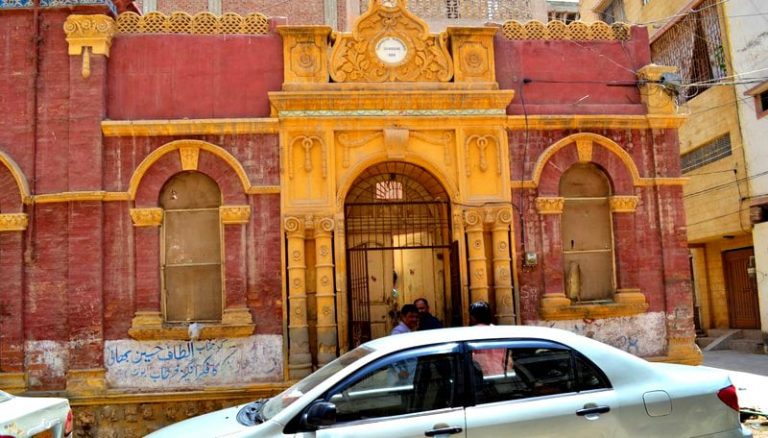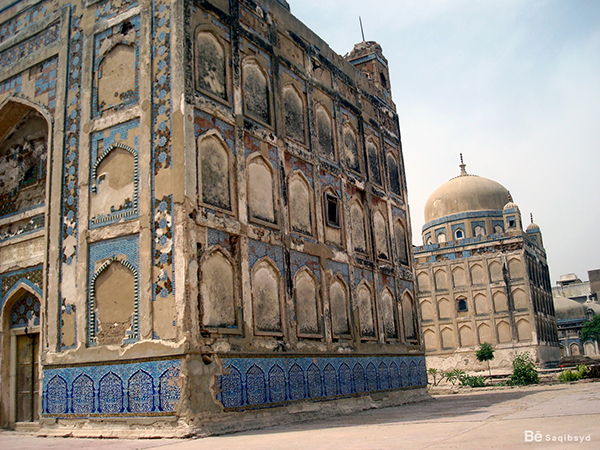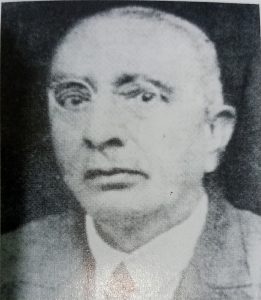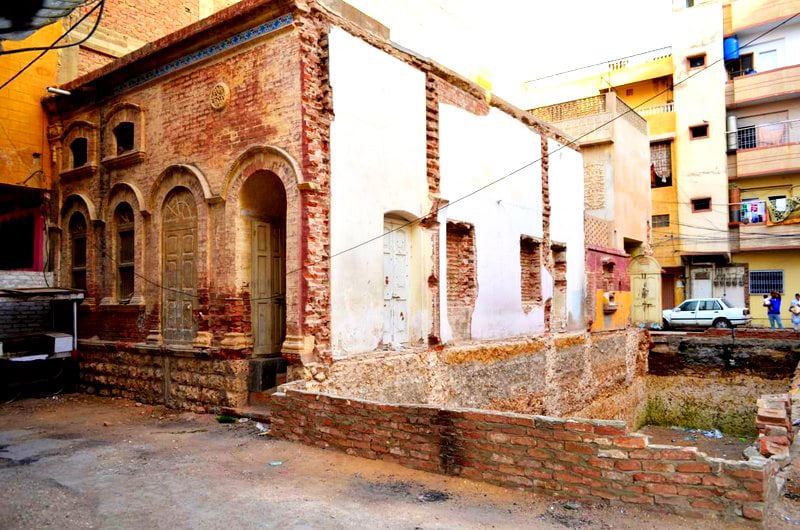
Hirabad is a cluster of Heritage Buildings built by Amils and Bhaibands of Hyderabad Sindh about a century back.
By Nasir Aijaz
Can we launch the battle to save our heritage in Hirabad, a cluster of well-planned residential buildings built by Amils and Bhaibands of Hyderabad Sindh about a century back? Some of the buildings have been demolished or have been put on sale through the estate agents.
‘House for sale in Hirabad’ – this was an advertisement that I noticed very recently while surfing through some websites, which made me to write on the heritage buildings left behind by the Amils and Bhaibands in 1947.
I think that we are perhaps the only country in the world that trashes its old buildings and too late we realize how very much we needed them.
I recall our journalist and researcher friend late Akhtar Baloch, author of several books on heritage, who once had said, “Every brick of the heritage building narrates a story of those who left in 1947. They built them with love and affection. When people like me feel bad looking at the neglect of these heritage sites, one wonders how the families of the owners must feel if they ever visit Sindh.”
American architect Frank Lloyd Wright (1867-1959) had rightly said, “You smell the soul of an old building. And the building tells you how to redo it. When I see architecture that moves me, I hear music in my inner ear.”
History of Hirabad
Hirabad was a thriving township of wealthy Sindhi Hindu merchants and traders known as Sindhworki who built palatial houses for themselves.

Before development of this hilly area as new township, this area mainly consisted dry field plains with a sparse distribution of hillocks. The Talpur dynasty of Sindh saw it as a favorable place to erect magnificent mausoleums, not much farther from Hyderabad, then capital of Talpur rulers. For some time, these were the only structures in the area until the land was used to develop a new residential locality.
The Amils and Bhaibands lived in the oldest part of the city, occupying whole streets in the bazaar area (now Shahi Bazaar) of Hyderabad, and were mostly Sindhworki merchants and traders who spent much of their time abroad.
According to one account, in the mid-1930s, growing tensions following the Spanish Civil War adversely affected the operations of these merchants and they started returning to Hyderabad. This contributed to a sudden growth in the population of the town which resulted in a considerable physical expansion.
However, historian Bherumal Maharchand Advani writes in his book ‘Sindh Je Hindun Ji Tareekh’ (History of Hindus of Sindh) that Amils were settled in the area falling between Sireghat and Chhotki (Chhodki) Ghitti (names of two streets) while the Bhaibands chose the area from Chhotki (Chhodki) Ghitti to the shrine of Juman Shah. Dewan Gidumal, a minister of Talpur rulers of Sindh, who had accompanied Mir Fateh Ali Khan Talpur from Khudaabad to Hyderabad, settled near the shrine of Juman Shah where a piece of land was lying vacant. Later, when the area became congested with growing population, a new locality, Nao Abad, was developed for residential purpose around 1875.
Bherumal has not mentioned exact year of development of Hirabad, but states that ‘It was after twenty or twenty five years of Nao Abad, that the new locality, named as ‘Hirabad’ was developed. Before the year 1892, there used to be wooden jetty where the Navalrai Market is built while the entire area of Hirabad previously gave a desert look.’
The Hyderabad Municipality, having already drafted plans for town expansion since its constitution, had started developing a new residential neighborhood, north of the old city bazaar, in order to accommodate the growing numbers of people. When finally settled, this new residential area started being called Hirabad, pronounced as Heer Abad.
Why it was named as Hirabad?

Heera or Hira, literally means diamond, and because of this most people think that this locality was named as Hirabad (Town of Diamonds), for its inhabitants who were mainly bankers, jewelers and traders. But the fact is that Hirabad is named after Hinanad Khemsigh, who then headed the Hyderabad Municipality and had played great role in development of new housing scheme.
Seeing this as an opportunity to set themselves apart, the Amils relocated to this newly developed neighborhood. Some Bhaibands and wealthier merchant firms followed, but still considered the older town a more favorable location even when Hirabad boasted better drainage facilities and electricity. As these rich merchants moved into the locality, they had palatial mansions built for themselves.
Post-partition migration
Following the Partition of British India, Sindhi Hindus migrated from their homeland to the Hindu majority areas of India, barely escaping the violent attacks of the Muslim refugees who fled India and settled in Karachi, Hyderabad and other cities of Sindh. The Sindhi Hindus abandoned their palatial houses which were then immediately occupied by the Muslim migrants. The new impoverished refugee occupants had little to no regard for the architectural values of these buildings and, soon after, these buildings fell into disrepair.
The Sindhworkis of Hyderabad liquidated whatever assets they had and left their homeland with all the belongings, losing all their immovable properties in Hyderabad.
Back to the point
In view of the crumbling heritage buildings and demolition of such buildings by the builder mafia for raising multi-story plazas, it is direly needed to launch a movement for protection and preservation of this treasure. The entire Hirabad locality should be declared by the government as ‘Cluster of Heritage’ and a ban should be imposed on sale, purchase and demolition of any building of Hirabad.
The government of Sindh and its department of Culture, Tourism & Antiquities as well as Endowment Fund Trust, an autonomous body, should open eyes and take immediate action in this regard. These departments should buy certain buildings to conserve them after renovation, as was done in case of Mukhi House near Pucca Qilla area. These measures would also help promote tourism.
If the government didn’t realize the importance of these heritage buildings, and no action is taken, the day is not far when this heritage site will vanish, and with it the history of Hyderabad’s magnificent locality will vanish forever.
In support of my contention, I will quote an incident, reported by Ms. Zahida Rehman Jatt, an anthropologist and social science researcher, back in 2018, published in English Daily Dawn.
“It was July 2016 and I was standing in front of an old house in Hirabad, one of the pre-Partition neighborhoods of Hyderabad, Sindh. The house had a nameplate bearing the name of its owner, Topandas Nirbhsingh Shahani. I was accompanied by Uttara, Mr. Shahani’s granddaughter and Syed Muhammad Shah, who was our guide and lived in Hirabad.”
“Uttara came all the way from Cambridge to see her ancestral home. We went inside and saw the house as it stood there, more than 80 years old. It was relatively better preserved and still exuded a strange charm that is typical of old, pre-Partition homes. But when I went to see the same house in 2018, more than half of it was completely demolished. Nothing was left of the old structure except a large empty plot littered with bricks and debris, empty racks that once belonged to wooden almirahs and some alcoves that used to keep earthen lamps.”

“Syed Muhammad bhai told that some builders bought this property, demolished everything, including the nameplate on the façade bearing the name of its owner. Now this place is chalked to become a multistory plaza.”
The last sentence of Ms. Zahida is eye-opener. She writes:
“While I felt sad at the fate of Shahani house, this was by no means an isolated incident. In fact, this was one of the many stories of demolition of beautiful historic buildings in once-magnificent Hyderabad.”
May I hope any action by the officials of concerned department of the government, who continue making tall claims of restoration and preservation of Sindh heritage?
________________
Nasir Aijaz is Karachi-based senior journalist and author of nine books on literature, language and history. He can be accessed at nasir.akhund1954@gmail.com